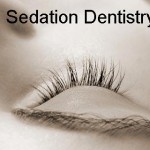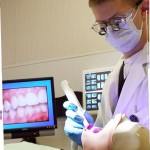A trip to the dentist can cause a mental state of panic in a large population of people. The fear of pain, the sound of the drill, and can be uncomfortable prohibit many did not even make an appointment. Unfortunately, this can lead to serious health problems. Your dentist will not only keep your teeth and gums in top shape, be the first to warn of diseases in depth, including oral cancer. Regular visits to the dentist should not be avoided or postponed. Thanks to modern medicine and advanced technology, fear and should not be a reason not to see your dentist. With sedation dentistry sleep and not feel anything! But what are the differences?
Sedation dentistry is the term given to a method of sedation of the patient through a variety of ways. There are three popular methods of sedation dentistry. The first is oral sedation. In this case, the patient takes a prescribed sedative, shortly before his appointment. You will need to arrange a coming and going to your appointment, it may take some time to disappear. Another popular option is nitrous oxide. With nitrous oxide, breathing through a mask throughout the procedure. The efficacy is similar to an oral sedative, but the effects wear off almost immediately after it is finished.
This may be a more convenient choice if transportation is a problem for you. There is also an option of intravenous sedation. This has been very popular in the past, but with more and more options are available, most patients are opting for something less invasive than the intravenous route. With sedation dentistry, are not completely asleep, just very sleepy and relaxed. Some patients may become so relaxed that they do actually fall asleep. However, sleep dentistry is actually something completely different.




With sleep dentistry, he was given general anesthesia. Under this type of anesthesia that will be completely unconscious. This is a more serious with the increased risks associated with general anesthesia. That are monitored throughout the procedure to check your breathing and heart rate. Sleep dentistry is increasing in popularity, but most dentists today are more comfortable with sedation dentistry safely.
You can choose your dentist, who is the best option for you. With so many different types available, be sure to discuss both the pros and cons of each procedure before choosing which is right for you.
Sedation dentistry is the term given to a method of sedation of the patient through a variety of ways. There are three popular methods of sedation dentistry. The first is oral sedation. In this case, the patient takes a prescribed sedative, shortly before his appointment. You will need to arrange a coming and going to your appointment, it may take some time to disappear. Another popular option is nitrous oxide. With nitrous oxide, breathing through a mask throughout the procedure. The efficacy is similar to an oral sedative, but the effects wear off almost immediately after it is finished.
This may be a more convenient choice if transportation is a problem for you. There is also an option of intravenous sedation. This has been very popular in the past, but with more and more options are available, most patients are opting for something less invasive than the intravenous route. With sedation dentistry, are not completely asleep, just very sleepy and relaxed. Some patients may become so relaxed that they do actually fall asleep. However, sleep dentistry is actually something completely different.




With sleep dentistry, he was given general anesthesia. Under this type of anesthesia that will be completely unconscious. This is a more serious with the increased risks associated with general anesthesia. That are monitored throughout the procedure to check your breathing and heart rate. Sleep dentistry is increasing in popularity, but most dentists today are more comfortable with sedation dentistry safely.
You can choose your dentist, who is the best option for you. With so many different types available, be sure to discuss both the pros and cons of each procedure before choosing which is right for you.
